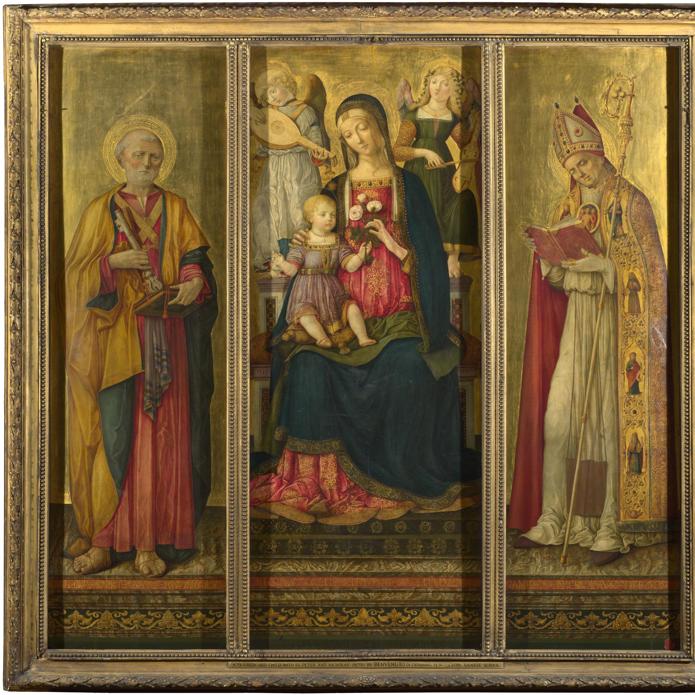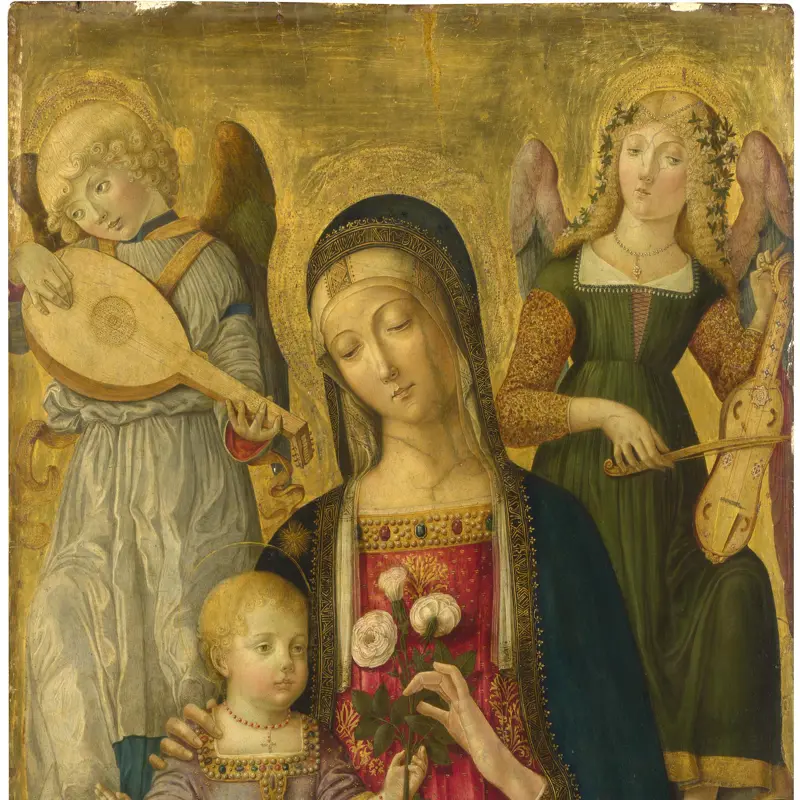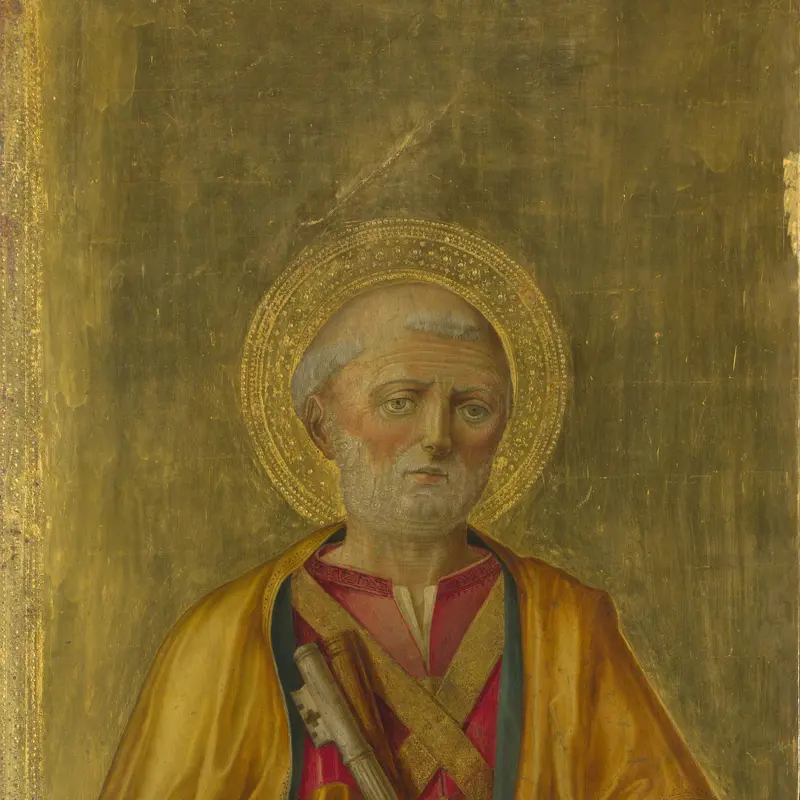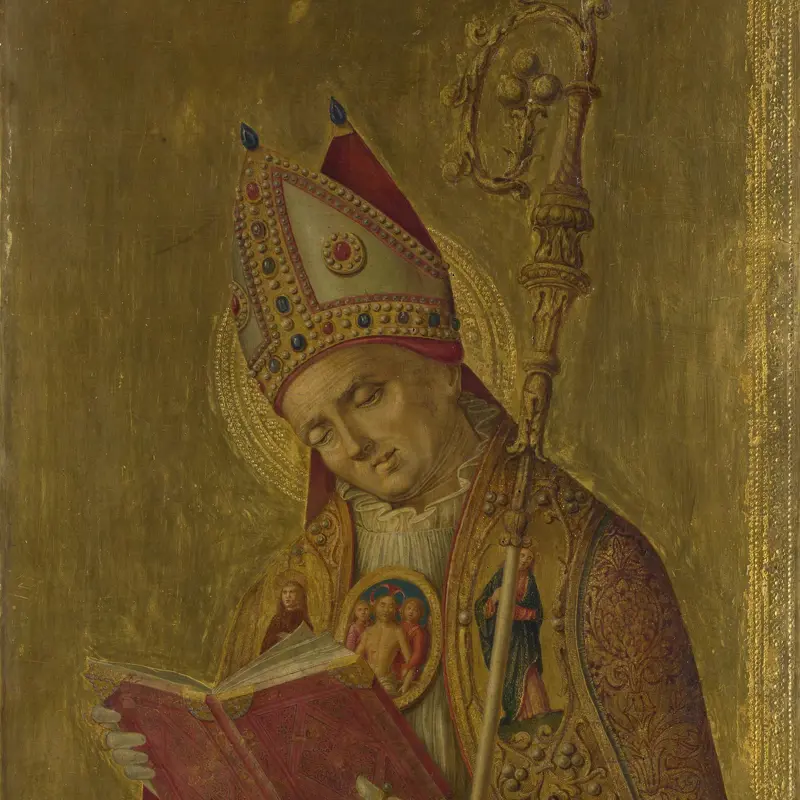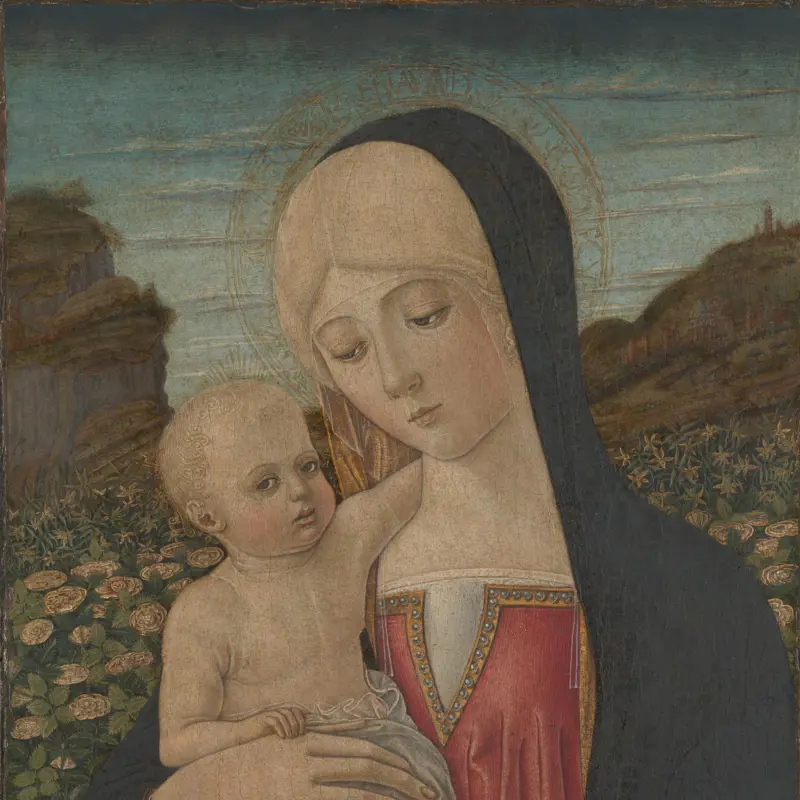Benvenuto di Giovanni, 'The Virgin and Child', 1479
About the work
Overview
The Virgin Mary, regal and refined, is seated on an inlaid stone throne with the Christ Child on her knee. Two musical angels with multi-coloured wings balance on the back of the throne, and there is a Latin inscription on the front of the marble parapet beneath it: REGINA CELI LETTARE ALLELVIA (‘Rejoice the Queen of Heaven, Alleluia’).
This is the central panel from a triptych (a painting made up of three parts), other parts of which are also in the National Gallery’s collection. The highly decorative quality of this painting – its shimmering gold, brilliant colours and elegant contours – is typical of Sienese painting of this and earlier periods. But Benvenuto was also aware of the spatial and naturalistic interests of artists and thinkers of his own time. The way that the Virgin’s cloak falls over her knees suggests a real body underneath, and the angels' naked feet are turned so as to be seen at right angles to the picture plane. Their toes curl over the edges of the throne.
Key facts
Details
- Full title
- The Virgin and Child
- Artist
- Benvenuto di Giovanni
- Artist dates
- 1436 - after 1509/17
- Part of the group
- Altarpiece: The Virgin and Child with Saints
- Date made
- 1479
- Medium and support
- Egg tempera on wood
- Dimensions
- 171 × 66 cm
- Inscription summary
- Signed; Dated and inscribed
- Acquisition credit
- Bought, 1874
- Inventory number
- NG909.1
- Location
- Not on display
- Collection
- Main Collection
Provenance
Additional information
Text extracted from the ‘Provenance’ section of the catalogue entry in Martin Davies, ‘National Gallery Catalogues: The Earlier Italian Schools’, London 1986; for further information, see the full catalogue entry.
Bibliography
-
1951Davies, Martin, National Gallery Catalogues: The Earlier Italian Schools, London 1951
-
1986Davies, Martin, National Gallery Catalogues: The Earlier Italian Schools, revised edn, London 1986
-
2001
C. Baker and T. Henry, The National Gallery: Complete Illustrated Catalogue, London 2001
About this record
If you know more about this work or have spotted an error, please contact us. Please note that exhibition histories are listed from 2009 onwards. Bibliographies may not be complete; more comprehensive information is available in the National Gallery Library.
Images
About the group: Altarpiece: The Virgin and Child with Saints
Overview
Sienese painting of the second half of the fifteenth century blended the artistic ideals of its own time with a continued reverence for the language of earlier Sienese art. Nowhere is this more true than in this altarpiece, painted in 1479 by Benvenuto di Giovanni, possibly for a church in Orvieto.
In the centre the Virgin Mary is seated on an inlaid throne with the infant Christ on her knee; in the side panels saints stand like statues on a marble parapet which runs across the whole altarpiece. The figures are set against burnished and tooled gold backgrounds, and all are spectacularly dressed in accordance with the Sienese passion for jewels and textiles – but they look convincingly solid underneath their clothes.

